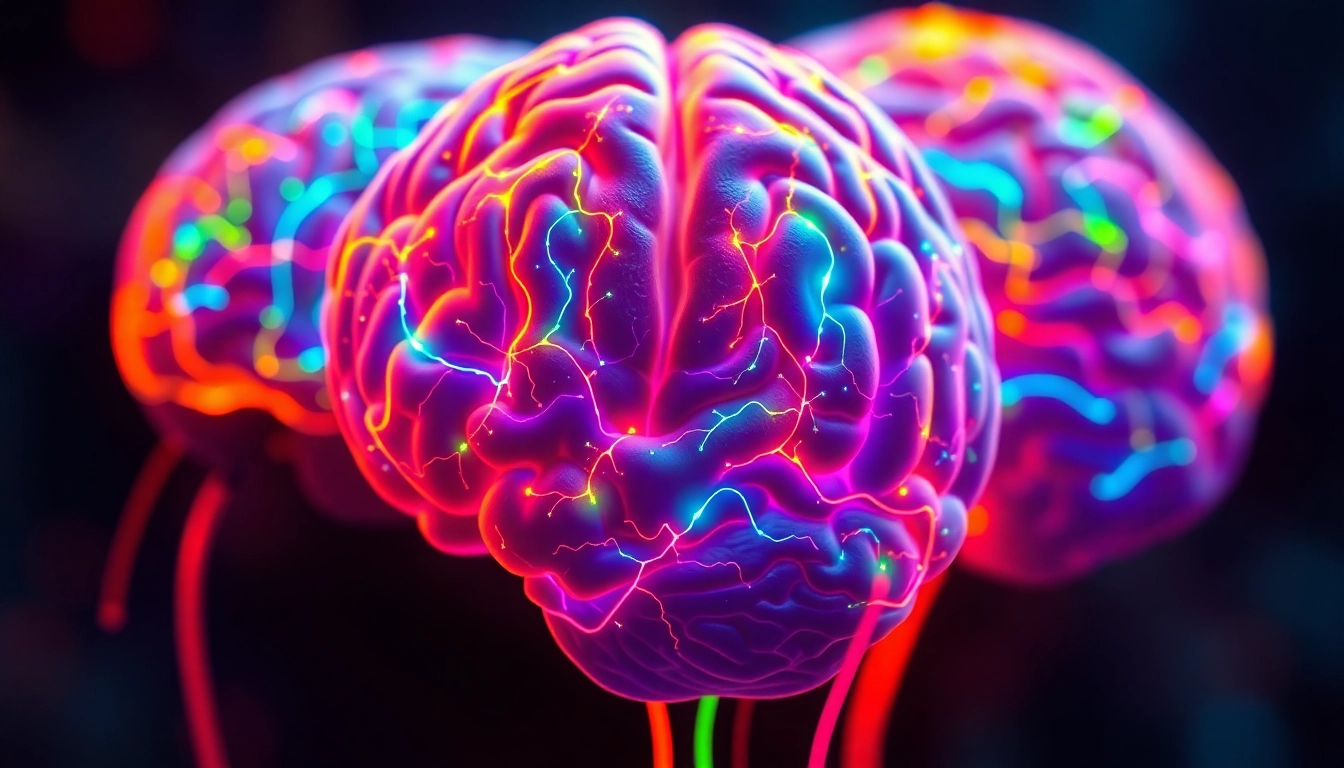Introduction to Nootropics
Nootropics, often referred to as smart drugs or cognitive enhancers, are substances that aim to improve cognitive function, particularly executive functions, memory, creativity, or motivation, in healthy individuals. As the demands of life increase and the quest for enhanced mental performance intensifies, the interest in nootropics has burgeoned. From students seeking to boost concentration during finals to professionals striving for peak productivity, the allure of these cognitive enhancers is undeniable. With a well-researched understanding, one can harness the potential of Nootropics effectively.
What Are Nootropics?
Nootropics are classified as substances that enhance cognitive function in a significant way with minimal side effects. Unlike other drugs that affect the brain, nootropics are designed to optimize brain health and function. They can be natural, derived from plants, or synthetic compounds developed in laboratories. The key characteristic that distinguishes nootropics from other cognitive enhancers is their safety profile—the ability to enhance cognition without significant toxicity.
History and Development of Nootropics
The term “nootropic” was coined in 1972 by Romanian psychologist and chemist Corneliu E. Giurgea, who synthesised the drug Piracetam. Giurgea defined nootropics with a set of criteria, which included the enhancement of learning and memory, the capability to protect the brain from physical or chemical injury, and the ability to improve the efficacy of other cognitive-enhancing compounds. Since then, extensive research has supported the development of various other nootropic substances, including natural compounds like Ginkgo Biloba and synthetic substances like Modafinil.
Common Forms and Uses of Nootropics
Nootropics come in several forms, including powders, capsules, gummies, and beverages. They are often marketed for a range of uses, from boosting energy levels and enhancing memory to increasing focus and creativity. In addition, nootropics can be utilized in combinations, known as stacks, to amplify their effects further. Users often report specific benefits such as improved mood, increased motivation, and sharper focus, making nootropics appealing for both academics and professionals.
How Nootropics Affect Brain Function
Cognitive Enhancement Mechanisms
The mechanisms through which nootropics work can be complex and varied, largely depending on the specific compounds involved. Many nootropics improve cognitive function by enhancing neurotransmitter activity, increasing blood flow to the brain, promoting neurogenesis, and protecting against oxidative stress. For example, substances like Bacopa Monnieri and Rhodiola Rosea work by modulating neurotransmitter levels, which in turn enhances mood and cognitive function.
Impact on Memory and Learning
Numerous studies have highlighted how nootropics can significantly impact memory and learning. For instance, research shows that compounds such as Piracetam and Rhodiola Rosea not only help improve memory consolidation—where new information is integrated—but also enhance recall capabilities. These effects suggest that nootropics can be particularly beneficial for students and those in fast-paced environments where learning is paramount.
Potential Effects on Mood and Anxiety
In addition to cognitive enhancement, nootropics have also been linked to improvements in mood and reductions in anxiety. Compounds like L-Theanine, commonly found in green tea, are noted for their calming effects, which can help offset jitteriness that may occur with stimulant use. Furthermore, many users report that the right nootropic combination can lead to a state of heightened focus and reduced anxiety, making it easier to tackle demanding tasks.
Popular Nootropics and Their Benefits
Overview of Natural Nootropics
Natural nootropics have been used for centuries in traditional medicine practices around the world. Common examples include Ginkgo Biloba, known for improving blood flow to the brain; Bacopa Monnieri, which supports memory and cognitive function; and Ashwagandha, noted for its adaptogenic properties that combat stress. These natural substances offer a variety of cognitive benefits while often presenting fewer side effects compared to synthetic alternatives.
Effective Synthetic Nootropics
Synthetic nootropics such as Modafinil and Aniracetam have gained popularity for their potent effects on cognitive performance. Modafinil is primarily used to treat narcolepsy but is also widely utilized off-label as a wakefulness-promoting agent. Users often report sustained alertness and enhanced cognitive function without the adverse effects associated with traditional stimulants. Aniracetam, on the other hand, is recognized for its mood-enhancing effects and promotes faster thinking and improved learning capabilities.
Comparative Benefits of Nootropics
When comparing different nootropics, the choice between natural and synthetic options often comes down to individual preferences, desired effects, and tolerability. Natural nootropics, while generally more subtle in their effects, are advantageous for individuals seeking a safer long-term option. In contrast, synthetic nootropics provide rapid and noticeable cognitive enhancement but require a more cautious approach regarding dosages and potential side effects.
Safety, Dosage, and Side Effects of Nootropics
Recommended Dosages for Common Nootropics
The effective dosage of nootropics can vary widely based on individual factors such as body weight, tolerance, and specific goals. For instance, the recommended dosage for Bacopa Monnieri often ranges from 300 to 450 mg per day. For Modafinil, typical dosages can range from 100 to 200 mg, depending on the needs of the user. It’s crucial to follow guidelines and consult healthcare providers to determine the best dosages.
Safety Concerns and Side Effects
While nootropics are generally considered safe, potential side effects can occur, especially with synthetic compounds. Common side effects may include headaches, digestive discomfort, and sleep disturbances. Users should be aware of these effects and monitor their reactions closely. Additionally, it is advisable to cycle nootropics to prevent tolerance and reduce potential side effects.
Long-term Use and Dependency Risks
Though many nootropics can offer short-term benefits, their long-term use warrants careful consideration. Some nootropics may lead to dependency or diminishing returns over time. Hence, it is often recommended to take breaks or cycle different nootropics to maintain their effectiveness and avoid potential adverse effects on mental health and cognition.
Implementing Nootropics into Your Routine
Choosing the Right Nootropic for You
Selecting the appropriate nootropic requires a careful assessment of individual needs, lifestyle, and cognitive goals. Identifying whether your priority is memory enhancement, mood stabilization, or increased focus can help narrow down choices significantly. Additionally, considering whether to pursue natural or synthetic options can also play a crucial role in decision-making.
Combining Nootropics with Lifestyle Changes
For optimal efficacy, combining nootropics with a healthy lifestyle can yield significant benefits. Factors such as regular physical exercise, a balanced diet rich in omega-3 fatty acids, hydration, and adequate sleep are essential for maximizing cognitive performance. Furthermore, incorporating mindfulness or cognitive-behavioral practices can also enhance the effects of nootropic use.
Measuring Effectiveness and Adjustments
Tracking the effectiveness of nootropics can involve subjective assessments such as journaling experiences, monitoring productivity levels, and noting changes in mood or cognitive function. Moreover, using cognitive assessment tools or apps can provide measurable data to inform potential adjustments in dosages or combinations of nootropics employed. Fine-tuning your approach based on this feedback can result in a more effective nootropic routine.



